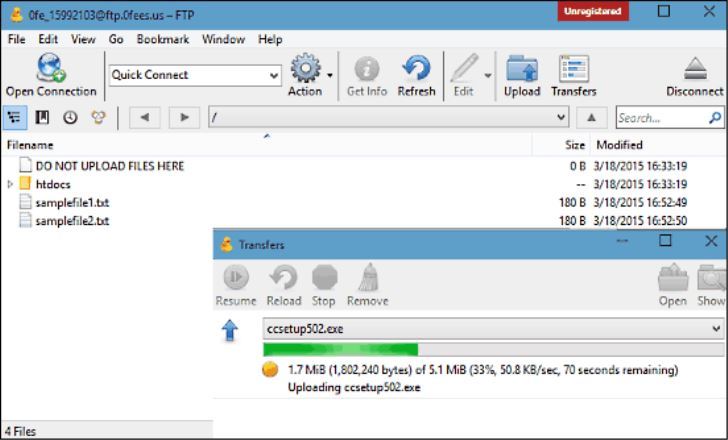

#Cyberduck s3 listing directory failed download#
For example, if you're using the AWS CLI to download an object to your Windows machine, you must use quotation marks around the object path. If the path to the object contains any spaces, be sure that the request uses the correct syntax to recognize the path.Otherwise, the requester receives a 404 NoSuchKey error. Confirm that the requested path matches the path to the object.For example, if an object is named myimage.jpg, but Myimage.jpg is requested, then requester receives a 404 NoSuchKey error. Requests for S3 objects are case sensitive. Confirm that the request matches the object name exactly, including the capitalization of the object name.If the requested object was available in the S3 bucket for some time and you receive a 404 NoSuchKey error again, then check the following: For more information about S3 consistency, see Consistency. After a write, you can perform a listing of the objects in a bucket. S3 also provides strong consistency for list operations. After a successful write of a new object, or an overwrite or delete of an existing object, any subsequent read request immediately receives the latest version of the object. Note that Amazon S3 delivers strong read-after-write consistency for all applications. Important: If you receive errors when running AWS CLI commands, make sure that you’re using the most recent AWS CLI version.

Or, you can run the head-object command using the AWS Command Line Interface (AWS CLI): aws s3api head-object -bucket awsexamplebucket -key object.jpg

To check if an object is available in a bucket, you can review the contents of the bucket from the Amazon S3 console. Before users make GET or HEAD requests for an object, make sure that the object is created and available in the S3 bucket. Amazon S3 generally returns 404 errors if the requested object is missing from the bucket.


 0 kommentar(er)
0 kommentar(er)
